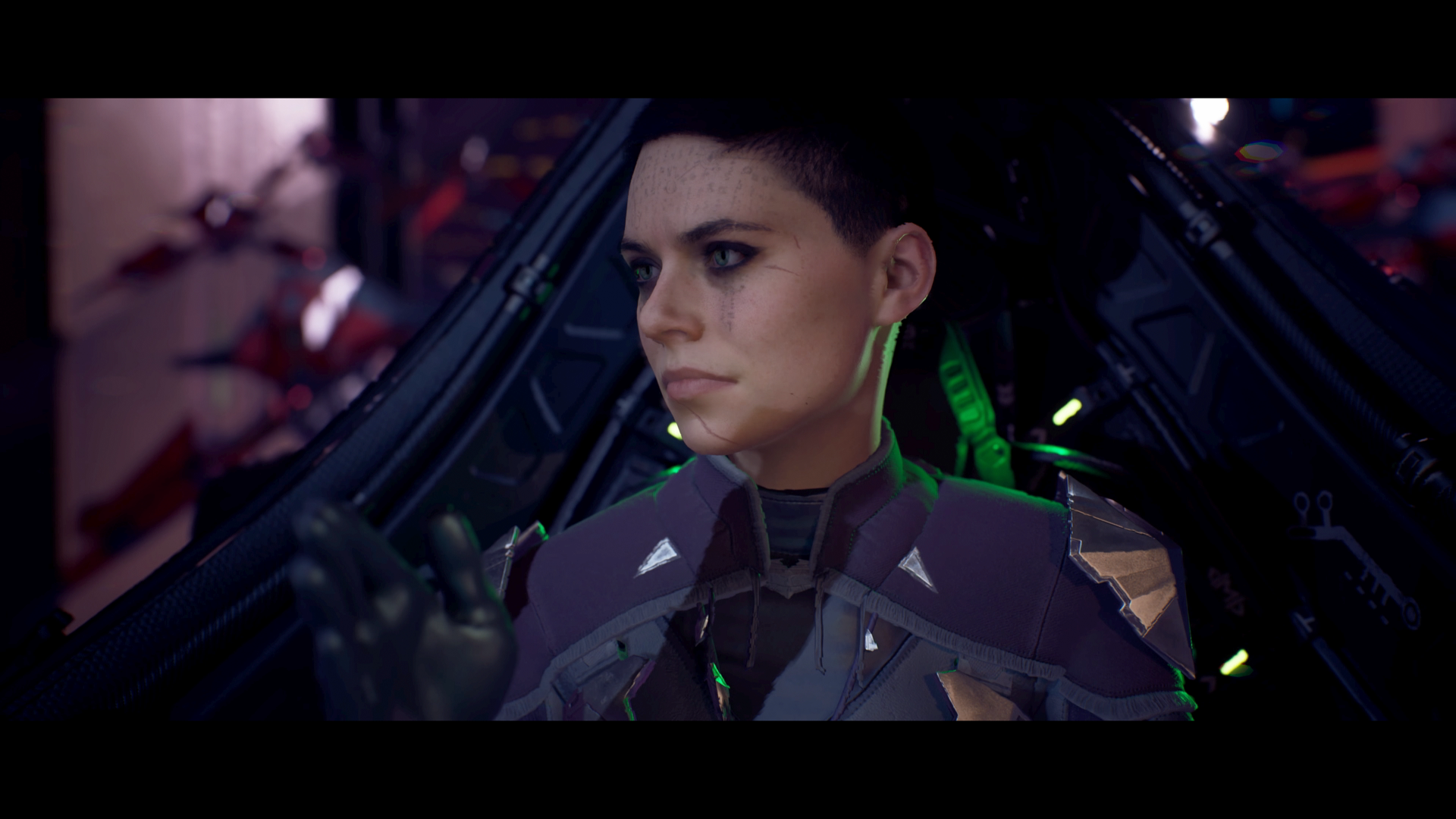Chorvs (Chorus)
"In Chorus"
Back in December, I looked at an earnest space shooter named Chorus, despite the box art stylized as "Chorvs." While I usually tend to dislike devs that change "v"s to "u"s and vice versa, I understand that it had to be done. "Chorus" is quite the common word for the title of a game. I've also seen games in the past that had generic names and were incredibly annoying to look up. Nonetheless, it was a visually impressive space shooter not without its flaws. Perhaps the biggest flaw Chorus had was its lack of promised content on the release date. Physical PS4 owners were promised a free PS5 upgrade upon release yet it wasn't readily available.
After looking up several message boards for information, I discovered that the upgrade wasn't ready yet. In fact, it wouldn't be ready until mid-January. Fortunately, the developers didn't classify Chorus as dead-in-the-milky-way as a ray-tracing patch was in the works. DualSense support would also be added, giving patient players a true next-gen experience. I'd say it's a good time as any to revisit Nara's struggle once more, this time with graphics and controls set to eleven. Here are my thoughts on Chorus, the PS5 version.


Scrap Heap And Carnage, Now In 4K
Judging from the screenshots above, it's easy to tell the difference between RT on and off. The left picture is taken from the PS4 version while the right is taken from the PS5 version. (Mobile versions will show the top and bottom being PS4 and PS5 respectively) There is a "performance" and "quality" mode for the PS5 version as graphic options. This makes me believe that the "pretty" choice was Quality originally. Now it's raytracing, as it blows "Quality" mode out the atmosphere. Raytracing adds a cinematic coat to an already visually impressive experience. Shadows are dynamic the bright hues of the space engines are prominent, lasers fire with a clash of light. It's beautiful
While the framerate takes a compromise in exchange for raytracing on the console version, the immersion certainly does not. This is also due to the support of the DualSense controller's capabilities. Trigger effects are meant to simulate how a firing trigger for a space cannon would feel. At half-press, for example, Nara's gattling gun fires at a steady rate. Pressing it all the way will cause the gun to go full auto. As space debris and turbulence happens the faster your craft goes, it'll be felt through the haptic feedback. I will never stop praising how good the DualSense feels when it's done right and Chorus is no exception.

Maybe Nara Isn't Too Bad Of A Protagonist If Not Severely Troubled
Perhaps I was a bit harsh on Nara's characterization in my first impression, or maybe I was just tired of melodrama and I wanted action. Whatever the case was, I understand the protagonist a bit more after starting from the beginning once more. I won't repeat myself but I'll add on and say that a lot of her motivation comes to light in sequences.
An early mission will ask her to retrieve a warship that only she knows how to control. As soon as she finds a place she calls home, she has to defend it from her former alliance who calls her out on her betrayal. The title of the game itself, "Chorus," refers to the battle cry of the enemy alliance that she was once a part of. Hearing her conflicting friendly public persona and her vicious unforgiving internal monologue gives Nara depth.

Turns Out PTSD-Inspired Dogfights Really Are Fun
As I was playing for a second time, I realized how to manage my weapons. The gatling gun and lasers each provide a purpose for Nara's arsenal. For shielded enemies, the laser tears through their shields while the machine gun tears through their hull. Sure you could use the laser and machine gun exclusively, but using them in tandem means the difference between a quick and easy dogfight and a drawn-out fight. I honestly have to thank games like Project Wingman for pointing me in the right intended playstyle. Missles and mounted guns work similarly in that game as it does in Chorus.
The heavy weapons are used to disarm and the smaller weapons are used to tear a spacecraft apart. For a general idea on how to use weapons, Chorus has a "mastery" tab that gives players objectives. Destroy X number of shields and the laser weapon levels up. Destroy a number of spacecraft with a gun and that too levels up. If there's a guideline on how to engage in combat, the Mastery system is the best advice Chorus gives the player. Also, yes, I revisited that one mission that I was stuck on for twenty minutes. I realized how her "senses" worked as items were much easier to pinpoint this time around.

Even With The Upgrades, Chorus Is A Fun Time No Matter What
For console players, the PS5 and XSX versions are the definitive versions due to raytracing and controller support. As I mentioned in my first impressions, however, the game is fun to play even in 1080p and a DualShock 4. Visually, it's easier to identify important items that I once missed due to lack of clarity. It didn't kill my experience on the PS4, but it made me realize the improvements Fishlabs made with the next-gen upgrade. No matter where or how it's played, fans of dogfighting and open-world mechanics will love Chorus.

Chorus is available on the PC, PS4, PS5, Xbox One, and Xbox Series X/S

